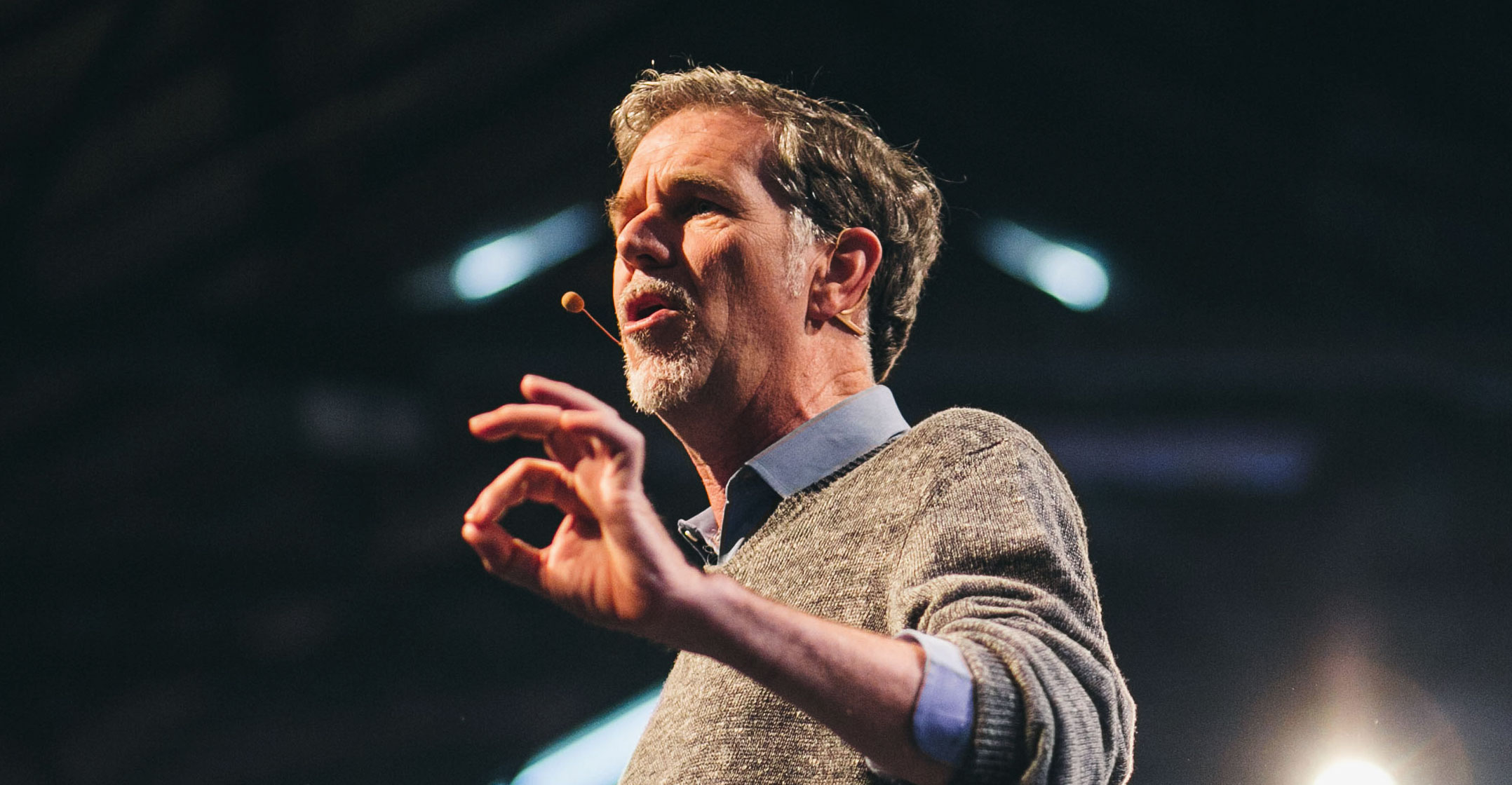
[dropcap]N[/dropcap]etflix has begun to reshape the TV business overseas just as it has in the US, its home market.
The streaming-video provider scored a record second quarter, according to a statement on Monday, surpassing forecasts for subscriber growth and boosting its international audience past the domestic total for the first time. Netflix shares surged in late trading.
Netflix’s blend of TV shows, movies and stand-up comedy has started to catch on in some of the biggest countries in the world, from Brazil to the UK. The company will be in at least 20% of broadband households in five of its largest markets outside the US by the end of the year, according to Instinet.
“All throughout the West, in Latin America, North America and Europe, we’re doing very well,” CEO Reed Hastings said on a webcast. “We just need to continue to do what we’re doing.”
The streaming video provider signed up 5.2m subscribers in the second quarter, two million more than analysts had forecast. The company said 4.1m of those new viewers came from outside the US, bringing the international total to more than 52m. International operations will be profitable for the first time this year, Netflix said.
The company will spend more than US$6bn on programming in 2017 to offer that global audience a little bit of everything. While most of the budget reflects shows licensed from big Hollywood studios, the company is releasing a dizzying array of new shows and movies of its own, including new series set in Spain, South Korea and Mexico during the quarter.
Shares of Netflix soared as much as 11% to $179.45 in extended trading, showing investors continue to forgive minuscule profit for growth in subscribers, which soared to almost 104m in the period. The stock is up 31% this year.
All that growth comes at a cost. Net income of $66m, or $0.15/share, fell short of the $0.16 average of analysts’ forecasts, even while up substantially from a year earlier. Operating margin shrank to 4.6% in the quarter, which the company attributed to higher content costs. Netflix raised $1bn in the quarter to fund original programming, and said it won’t be cash flow positive for years to come.
Carefree investors
But investors won’t care so long as the subscriber growth continues. The company projects it will add 4.4m new subscribers in the current third quarter, compared with the 3.96m average of analysts’ estimates. Netflix forecasts net income of $0.32/share, on revenue of $2.97bn. That compares with analysts’ estimates of $0.23 and revenue of $2.88bn.
For the second quarter, Los Gatos, California-based Netflix signed up 1.1m US customers, easily beating the 633 000 average of analysts’ estimates compiled by Bloomberg. Total sales grew to $2.79bn, compared with projections of $2.76bn.

Having already surpassed 50m customers in the US, Netflix has fixated on adding customers abroad, especially in Latin America and Europe. The company recently opened a customer-service centre in Amsterdam that will employ at least 400 people by next year.
Netflix has promised international markets will be a source of new customers for years to come. Hastings wants 80-90% of the company’s audience to be outside the US — suggesting the company sees a global market of 450m subscribers or more. Netflix stuck by its forecast for a 7% operating margin for the year.
Asia remains the biggest challenge, Netflix officials repeated Monday. Consumers have different tastes in TV shows and movies and are more likely to watch on mobile devices.
“We’ll invest more time and energy in Asia,” Ted Sarandos, the company’s chief content officer, said on the webcast. Netflix will also put more people on the ground than it has in other places.
First steps
Netflix first moved overseas in late 2010, expanding to Canada, which remains the service’s largest international market, according to estimates by Anthony DiClemente, an analyst with Instinet. The UK and Brazil are Netflix’s two largest markets outside the US and Canada, while Germany is next.
Some media companies and authorities have been less welcoming to Netflix than consumers. The Cannes Film Festival vowed not to show Netflix movies next year if the company doesn’t released them in French movie theatres. Local broadcasters have united to produce programs so they can compete for projects with the free-spending US service.
Yet pay-TV operators and Internet providers are more sanguine. Altice recently struck a deal to offer Netflix as an add-on to its internet service in France, Portugal, Israel and the Dominican Republic.
Netflix has long downplayed competitive threats, arguing there will be many winners in the shift to online TV. Yet it is spending money to create enough programming so that viewers have little reason to watch anything but Netflix. The company’s long-term commitment to programming totals $15.7bn, up from $13.2bn a year earlier.
In the second quarter, Netflix released more than 50 new programmes, spanning 14 original series, 13 stand-up comedy specials, nine original films, seven original series for kids, six documentaries and two documentary series. The company doesn’t release viewership figures for any of its programmes, though it has called out older shows House of Cards and Orange Is the New Black as hits in the past.

Some of the new shows failed. The company cancelled Girlboss after the first season and a handful of other shows in the quarter. But enough have pleased consumers and critics. Netflix earned 91 Emmy nominations last week, the most in company history and second only to Time Warner’s HBO.
“The content engine on a global basis is performing better than people expected,” said John Janedis, an analyst with Jefferies. “Some of the social media buzz around House of Cards and Orange is the New Black was not as positive as prior seasons, but it didn’t impact the business.” — Reported by Lucas Shaw, (c) 2017 Bloomberg LP




